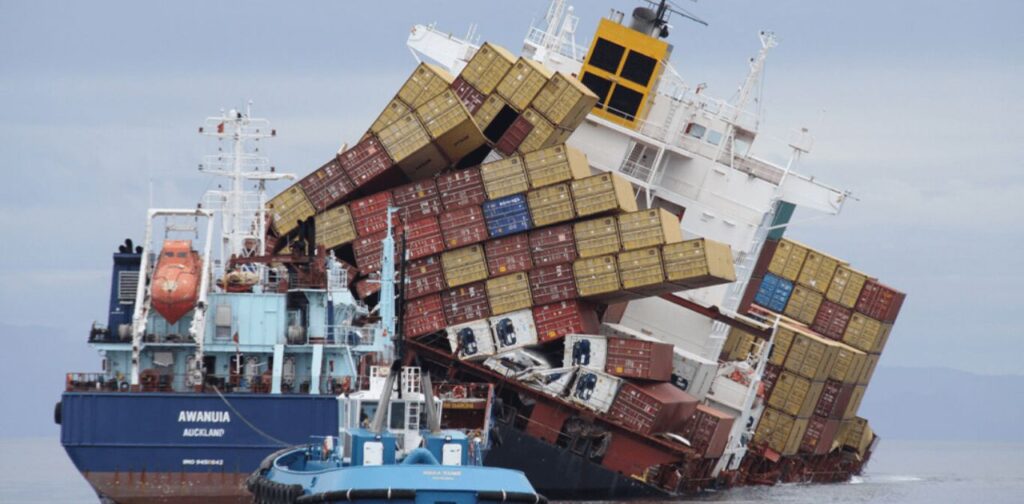When transporting items by car, ensuring safety and efficiency is crucial to avoid accidents, damage, or unnecessary delays. Whether moving personal belongings or handling business logistics, proper planning, organization, and preparation are essential for a smooth journey.
Expert in logistics, Rena Monrovia, provides invaluable insights on how to transport cargo securely, from choosing the right storage containers to balancing weight distribution and staying alert on the road. With her practical tips, you can navigate the process confidently, prioritizing safety while maximizing space and efficiency.
Importance of Proper Storage Containers
When transporting items by car, one of the first and most critical steps is selecting the right storage containers. Proper containers ensure that your items are secure, organized, and protected throughout the journey. Choosing durable and lockable containers prevents your belongings from getting damaged during transit. Sturdy containers minimize the risk of crushing or shifting under the weight of other items, especially when transporting fragile goods.
Proper storage containers also offer weather resistance, which is crucial if you anticipate rain or extreme temperatures. Plastic containers with secure lids are ideal for weather protection. Cardboard boxes, though commonly used, may not be reliable in wet conditions. Moreover, investing in stackable containers with lids can help you save space and keep your items in order. Rena Monrovia recommends using high-quality containers for longer trips, ensuring that nothing is damaged by the time you arrive at your destination.
Securing Your Cargo
Securing your cargo is as important as choosing the right containers. Even with the best storage solutions, improper securing can lead to disastrous results. An unsecured load can shift, leading to accidents or causing damage to your items. Tie-downs, ropes, bungee cords, or ratchet straps are common tools to ensure your cargo stays in place.
Before securing, assess how your cargo is packed. Place heavier items at the bottom, followed by lighter, less fragile ones. Once packed, use tie-down systems, making sure the cargo doesn’t move when the vehicle is in motion. It’s essential to anchor these systems to fixed points in the vehicle, like anchor rings or rails, and apply adequate tension to avoid any slack. Over-tightening, however, can damage delicate items. Remember, securing your cargo properly not only protects your belongings but also improves road safety by reducing the likelihood of distractions caused by shifting loads.
Preventing Damage with Protective Coverings
Even with solid containers and secured cargo, the risk of damage remains unless extra preventive measures are taken. Protective coverings, such as blankets, tarps, or bubble wrap, offer an added layer of security. When transporting fragile items like glass, electronics, or furniture, covering them with protective materials prevents scratches, dents, and other potential damage.
Tarps are excellent for shielding your items from dust, rain, or other environmental factors, especially when transporting items in an open vehicle like a truck. For delicate items, using foam or bubble wrap around the edges or corners will cushion them from bumps and vibrations. Furniture pads are also ideal for larger items, as they protect against friction that could wear down surfaces. Rena Monrovia advises always carrying extra coverings in case unexpected weather conditions arise, ensuring the safety of your items regardless of the journey’s challenges.
Organizing Your Load: Maximizing Space and Efficiency
Efficient organization is key to maximizing space when transporting cargo by car. By optimizing space usage, you can reduce the number of trips needed and ensure that the load remains balanced. Start by placing larger and heavier items at the bottom or toward the vehicle’s center, which helps maintain stability and reduces the risk of toppling.
Smaller items can be placed on top or tucked into spaces between larger items. Using stackable storage containers can enhance space utilization. Moreover, always leave room for visibility. Ensuring that the driver’s rear and side views are unobstructed by the load is paramount for safety. Overcrowding the vehicle can create blind spots, so be mindful of organizing in a way that balances efficiency with safety.
Strategic packing can also help with unloading. Placing items that need to be accessed first near the back or top ensures quicker, easier retrieval at the destination. Labeling containers based on priority or fragility can further streamline the process, making the entire journey more efficient.
Balancing Weight Distribution for Stability
Maintaining a proper balance in weight distribution is essential when transporting a load. Uneven distribution can lead to difficulty in handling the vehicle, increase the risk of accidents, and place undue strain on your car’s suspension system. Ideally, weight should be evenly spread out both horizontally and vertically across the car or truck bed.
Heavy items should be placed on the bottom and close to the center of the vehicle, over the axles if possible, to avoid tilting or straining one side. Overloading one side of the vehicle can cause it to become unstable, especially when turning or navigating sharp curves. This imbalance also increases fuel consumption and wears down the tires unevenly, which can lead to further maintenance costs. Drivers need to adjust their speed and driving technique when carrying a heavy load, ensuring stability and control over the vehicle.
Checking Vehicle Capacity and Limits
Every vehicle has a maximum load capacity, which should never be exceeded. Ignoring this capacity not only puts your items at risk but can also damage your vehicle and jeopardize your safety. Before loading your car, consult the vehicle manual to determine the Gross Vehicle Weight Rating (GVWR). This rating indicates the maximum weight the car can handle, including passengers, fuel, and cargo.
Overloading can lead to several issues, including reduced braking efficiency, poor handling, and suspension problems. If your cargo exceeds the vehicle’s capacity, consider renting a larger vehicle or making multiple trips. Rena Monrovia emphasizes the importance of knowing these limits and checking tire pressure, engine capacity, and suspension before undertaking long trips with heavy loads.
Securing Loose Items: Minimizing Distractions and Hazards
Loose items inside the car can be a significant source of distractions, especially during sudden stops or turns. These items may shift, fall, or roll around, causing distractions for the driver. Moreover, loose objects become potential projectiles during accidents, posing a danger to passengers. To minimize these risks, it’s crucial to secure any loose items properly.
Use seat belts, netting, or cargo dividers to contain smaller items. Items such as backpacks, electronics, or groceries should be fastened in the back seat, trunk, or floor area. Rena Monrovia suggests using dividers to organize the space within the trunk or back of your vehicle. Placing items in designated sections prevents them from shifting unexpectedly, enhancing both convenience and safety.
Performing Pre-Departure Checks: Ensuring Readiness for the Journey

Before embarking on your journey, performing a thorough pre-departure check is essential. Rena Monrovia advises inspecting your cargo, securing mechanisms, and vehicle condition to ensure everything is ready. Inspect your vehicle’s tire pressure, fluid levels (oil, coolant, brake fluid), and battery health. Confirm that your lights and signals are working properly.
For your cargo, verify that tie-downs and protective coverings are secure. Walk around the vehicle to ensure nothing is loose or unbalanced. Additionally, check for any obstructions to visibility, ensuring that mirrors and windows are clear of obstructions. These simple checks can prevent accidents or breakdowns, ensuring a smooth and safe journey.
Planning Your Route: Minimizing Risks and Delays
Route planning is essential for minimizing risks and delays during transportation. Rena Monrovia recommends researching your route in advance, identifying potential road closures, construction, or traffic delays. Use navigation tools that provide real-time updates on traffic and road conditions to adjust your route if needed.
Additionally, plan for rest stops and fuel breaks, especially during long trips. Having backup routes in mind can save time in case of unforeseen circumstances. Understanding the terrain is also crucial. For example, avoid steep, narrow roads if your vehicle is heavily loaded, as they may be difficult to navigate.
Staying Alert and Focused: Driver Responsibility
Staying alert and focused while driving is a critical responsibility, particularly when transporting cargo. Drivers need to avoid distractions, such as using mobile devices, eating, or adjusting the radio. Drowsiness is another common risk on long journeys, and it’s crucial to rest before hitting the road. Rena Monrovia advises drivers to take frequent breaks during long trips to combat fatigue and maintain focus.
Additionally, drivers should be prepared to adjust their driving habits based on road and traffic conditions. Reducing speed, maintaining a safe following distance, and being vigilant of other drivers will minimize the risk of accidents and ensure a safe arrival at your destination.
Monitoring Weather Conditions and Adjusting Plans Accordingly
Weather plays a crucial role in road safety, particularly when transporting goods. Rain, snow, fog, or high winds can create hazardous driving conditions. It’s essential to monitor weather forecasts in the days leading up to your trip and adjust your plans accordingly. If the weather forecast predicts adverse conditions, it may be wise to delay the journey or choose alternate routes with better conditions.
If you must travel in bad weather, take extra precautions. Reduce speed, maintain a greater following distance, and use headlights appropriately to improve visibility. Be particularly cautious on slick roads, as heavy loads can make braking more difficult.
Making Regular Stops: Rest and Refreshment
On long-distance journeys, regular stops are crucial for both driver and passenger well-being. Fatigue can impair judgment and reaction time, so planning regular breaks is essential. These stops provide opportunities to stretch, hydrate, and refresh, improving overall focus and alertness.
Additionally, these breaks allow drivers to check on their cargo. Inspecting your load during each stop ensures everything remains secure and no adjustments are necessary. Rena Monrovia recommends stopping every two hours during long trips to reduce the risk of fatigue and improve concentration on the road.
Read Also: How Much Does Taylor Swift Weight in 2024? Explore Her Diet, Height, and Net Worth
Legal Compliance
When transporting items by car, ensuring compliance with all legal regulations is non-negotiable. Each country, state, or region may have specific laws governing the transport of certain goods, especially hazardous or oversized cargo. It is the driver’s responsibility to know and adhere to these laws, avoiding fines or penalties.
Furthermore, adhering to road regulations, such as obeying speed limits and traffic signals, is critical. Overloading your vehicle may also result in fines or, in severe cases, impounding of the vehicle. Rena Monrovia advises familiarizing yourself with both local and regional transport laws before setting out on your journey.
Conclusion
In conclusion, transporting items by car requires careful planning, organization, and a commitment to safety. By prioritizing the selection of proper storage containers, securing cargo effectively, and implementing protective measures, you can ensure that your belongings arrive safely at their destination. Key considerations such as balancing weight distribution, checking vehicle limits, and monitoring weather conditions play a critical role in successful transportation.
Moreover, staying alert, making regular stops, and adhering to legal compliance enhance not only your safety but also the integrity of your cargo. By following these expert tips from Rena Monrovia, you can navigate the complexities of transport with confidence, turning what could be a stressful experience into a smooth and efficient journey. Remember, safety should always be your top priority, ensuring a successful transport experience every time.
Latest Article

Youthful insight with exceptional writing skills, delivering engaging and thought-provoking content.



